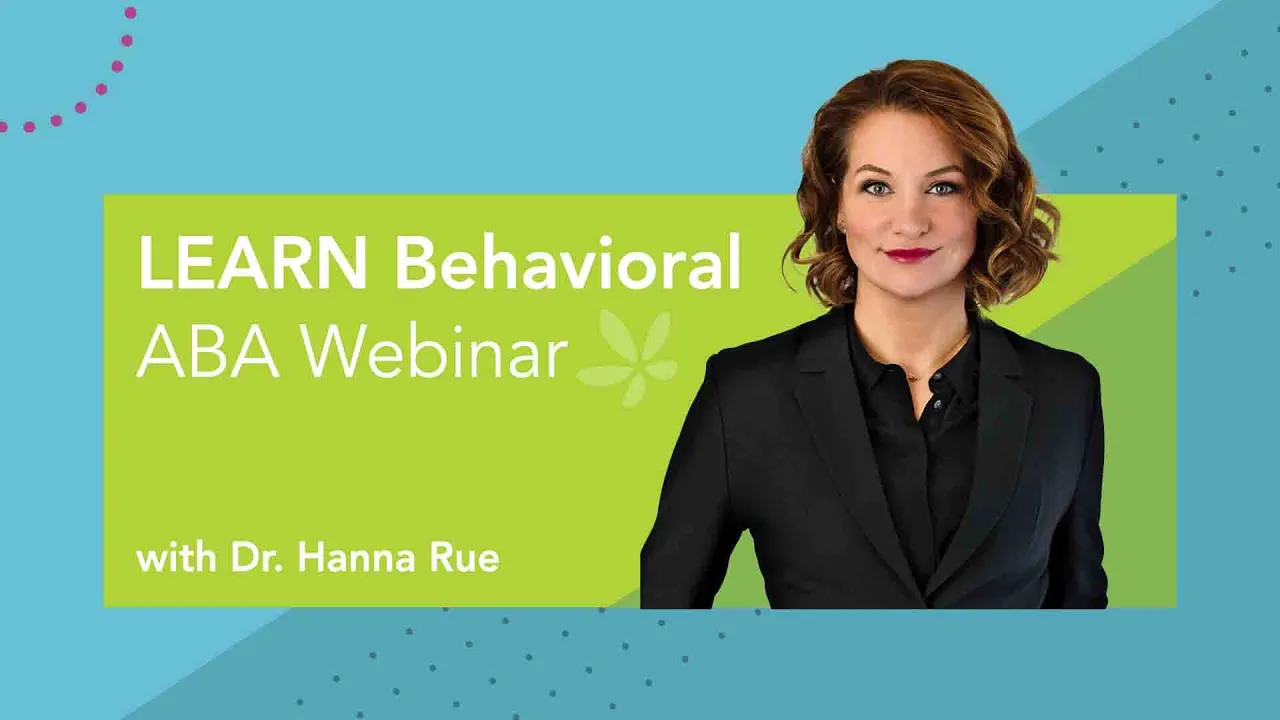December 15, 2025
Tour our De Pere ABA Therapy Learning Center
FEATURED POSTS
December 11, 2025
December 4, 2025
We’re thrilled to have a local ABA therapy Learning Center in De Pere, Wisconsin! To learn more about our center, visit here.
We’re hiring BTs, BCBAs, Clinical Psychologists & More. View open positions
FEATURED POSTS
We’re thrilled to have a local ABA therapy Learning Center in De Pere, Wisconsin! To learn more about our center, visit here.
We’re thrilled to have a local ABA therapy Learning Center in Madison, Wisconsin! To learn more about our center, visit here.
People often say that history is written by the victors. When the colonists won the American Revolution, they described the war as a noble struggle to escape tyranny. Had the British won, history books might have called it a heroic effort to save the empire from ungrateful rebels.
In the same way, most people in America are able-bodied, so they decide what is “normal.” For example, we might see an autistic brain or someone with poor eyesight (but stronger other senses) as less valuable. But really, these are just different ways of thinking and living.
For more than 60 million Americans with disabilities, this can be a challenge. They have to fit their lives into a world designed for able-bodied people, even though it would be easy to make the world work for everyone.
Contemporary treatments include the individual in planning when possible. Contemporary practices change in response to the voices of those who have received therapy in the past.
Ableism is when able-bodied people assume everyone is like them and fail to see the challenges people with disabilities face.
Ableism includes unfair ideas, such as thinking people with disabilities always need help, even if they don’t ask for it. Not all disabilities are visible, which can lead to wrong assumptions about mental illnesses being different from physical ones. These false beliefs make it harder for people with disabilities to be treated equally and included in society.

Applied behavior analysis (ABA) is widely regarded as the most effective treatment for autism, supported by decades of research. It isn’t a single therapy method. Instead, it’s a flexible approach that uses different techniques to help children build the skills they need to thrive at school and in daily life.
Recently, ABA has increasingly become the target of much controversy as self-advocates are speaking up about their experiences. They reject the idea that teaching people with autism the skills deemed necessary without their input or choice. Some advocates say independence is meaningless without happiness and that people with autism should choose their own goals, which might not include fitting in with others.
ABA, which is essentially the science of good teaching, has a long history and was originally developed in the 1960s by a group of researchers at the University of Washington. ABA was used to treat individuals with developmental disabilities and initially was a rigid, highly structured and teacher-directed program, which led to some of the negative experiences and associations with ABA. Historically, for example, ABA was used to reduce or eliminate “stimming” – repetitive physical movements and sounds that may soothe and reduce anxiety. We now better understand that stimming helps people with autism manage their sensory processing and their environments.
Just like in other areas of medicine and science, the field of ABA has advanced in a significant and meaningful way to become a play-based, naturalistic, family-focused and individualized, contemporary treatment that is tailored to the unique needs and goals of everyone. A good ABA program collects and reports data to show effectiveness. Providers must demonstrate success, validated by parents, through goals set with the family. If your provider doesn’t follow this approach, they may not be using best practices.
ABA now adapts to individual needs by learning from adults. While negative experiences must be addressed, dismissing ABA entirely overlooks its success for many. Good programs focus on the client, seek consent, and value input. Research and ask key questions when choosing a provider.

Your child’s program should be client-centered and future looking, which means that your family and relevant caregivers are providing input into your child’s strengths and challenges, and that you and your child are helping to guide the goals of his/her program based on your preferences and needs.
The science of ABA has a long history with decades of research to support its development and evolution. While ABA is most widely known in its application to autism, ABA was developed, and has been applied, to address many circumstances regarding behavior that matter to society. ABA is applied in many different areas, including mental health, animal training, organizational behavior management, marketing, forensics, sports, and physical health, to name a few. Just as other areas of science and medicine advance and application of treatments change, so has the field of ABA. Many lives have been impacted by ABA for the better. It is incumbent upon the professional community to listen, learn, and evolve its practice so that their services are as relevant and effective as possible. After all, the purpose of ABA is to help children with autism achieve the goals that matter most to them and their families — goals that foster growth, independence, and joy in their everyday lives.
What is contemporary ABA and how does this person-centered approach help children with
autism find success?

For many families raising a child with autism, one of the biggest fears is a child slipping away. That might mean walking out the front door, leaving the playground or disappearing into a crowd. This behavior, often called “wandering” or “elopement,” can happen in a matter of seconds. It’s more than stressful. In some cases, it can be life-threatening.
Summer brings even more opportunities for this to happen. Routines shift, outings increase, and kids are often near water, one of the biggest safety hazards for children with autism. Understanding why wandering happens and how to prevent it can help families stay prepared and safe.
Wandering happens when a child leaves a safe place without permission or supervision. This can include leaving home, school, a playground, or a caregiver in public.
In children with autism spectrum disorder (ASD), it’s especially common. A 2012 study in Pediatrics found that nearly half of children with autism had tried to wander or run away at least once after age 4. Of those, 26% were missing long enough to cause concern.
The reasons vary. Some children may seek out a place they enjoy, such as water. Others may run to escape overwhelming sounds, sights, or situations. But no matter the cause, the risk is high.
Wandering can happen any time of year, but summer adds new layers of risk. Families are more likely to be out of their routines, exploring new places, or visiting pools, lakes, and beaches. New environments can be exciting, disorienting, or overstimulating for kids with autism.
Water presents the greatest danger. According to the National Autism Association, accidental drowning accounted for 71% of all deaths resulting from wandering in children with autism under age 15.
And it can happen fast. The Centers for Disease Control and Prevention (CDC) reports that it takes as little as 20 seconds for a child to drown.
Many families aren’t told about wandering risks when their child is first diagnosed. But there are proactive steps that can help reduce danger.
Swim lessons are one of the most effective strategies. Some insurance plans may cover swim lessons for children with autism as part of behavioral treatment. Read more in Why Swimming and Water Play Benefit Kids with ASD.
Families can also partner with a board certified behavior analyst (BCBA) to teach safety skills. BCBAs can support children in tolerating wearable tracking devices, reducing bolting behaviors, and recognizing safe adults or “community helpers.”
Not every child with autism wanders. But for those who do, preparation can save lives.
Summer outings should be fun, not stressful. These 4 Steps to Swim Safety for Your Child with Autism offer practical tips families can use right away.
For more information on wandering and autism safety planning, visit the National Autism Association’s Big Red Safety Toolkit.
LEARN is committed to fostering a culture that embraces what makes us each unique—be it race, ethnicity, gender/gender identity, sexual orientation, religion, national origin, disabilities/abilities, or socioeconomic background. LEARN aims to acknowledge the lived experiences and diversity of perspectives of our staff and welcomes our teammates to share their stories to help foster conversations about diversity, equity, and inclusion in our communities.
By: Jasmine White, M.S., BCBA, Behavioral Concepts (BCI)
Today, the topics of diversity, equity, inclusion, and equality are at the forefront of many organizations. The long-standing impact of structural racism and its influence on society can no longer be disregarded. People of all creeds are speaking out against injustices and the need to promote inclusion. The dialogues on disparities have led me to reflect on the field of applied behavior analysis (ABA) and the community which it serves. To what extent has structural racism impacted ABA as a practice? Are ABA practitioners able to identify biases within the field? What is the impact on the provision of services? How does it influence diagnosis? The literature on structural racism has shown that even the most well-intended person can possess biases, we are not immune. Therefore, it is our time as a community to gain an understanding of how structural racism has affected the field of ABA.
Here at LEARN, it is our goal to contribute to a brighter future for all, which means bringing to light sensitive topics that are impacting the communities we serve. While this may be an uncomfortable conversation, it is needed for the development of cultural humility in ABA practice. LEARN’s focus is twofold, call attention to and create a constructive conversation around disparities in diagnosis and treatment related to diversity, equity, and inclusion. As an organization that serves a diverse population, it is our responsibility to bring attention to the disparities experienced by those we serve and to be a part of the solution towards lasting change.
Ethnicity is known as belonging to a specific racial, national, or cultural group and observance of that group’s customs, beliefs, and or language. Depending on ethnicity, one may have a life exposed to more inequalities. For racial and ethnic minorities in the United States, these inequalities include health disparities, such as higher rates of chronic disease, lower life expectancy, and decreased quality of life compared to the rates among non-ethnic minorities.
Ethnicity also has a direct impact on how early autism is identified, evaluated, and diagnosed. Research shows that not only do Black and Latino children with autism spectrum disorder (ASD) receive their diagnosis and start intervention at an older age than White children with ASD, but they also less frequently receive evidence-based interventions. For Black and Latino families, this directly impacts service opportunities, outcomes, and quality of life. According to the Center for Disease Control, studies have shown that implicit bias, lack of access to healthcare services, and non-English primary language are potential barriers to the identification of children with ASD. The research established that Black and Latino children receiving ABA services were more likely to score lower on caregiver reports of health care quality than their White counterparts, including areas of access to care, referral frequency, number of service hours, and proportion of unmet service needs.
As a community, we must investigate ways to expand access and resources to those who so desperately need services. Identify areas of structural racism and work to reduce and eliminate them from ABA practice. Train our practitioners to identify and bracket implicit biases. Find communication methods so that all families can have a voice regardless of the primary language spoken. Explore ways to have open and honest networks of communication so that we can continue to have conversations that evoke change. Here at LEARN, we hope to be a part of the solution to these disparities so that we may create an environment where there is equity in access for those we serve.
Discover more about LEARN Behavioral’s Diversity, Equity, and Inclusion initiatives. Let us find ways to work together to increase awareness and improve access to the communities we serve. Together, we can achieve more.
LEARN pledges to create a community centered around trust, respect, tolerance, and empathy. Read more about LEARN’s DEI journey in our 2021-22 DEI Annual Report and find out how we are investing in our clinicians’ cultural competence and increasing the diversity of our clinical team. Together, we’re better.
Jasmine is a BCBA and has worked with BCI for four years. She recently graduated Magna Cum Laude with a Master of Science in ABA from Bay Path University in Longmeadow, Massachusetts. Jasmine is currently conducting her thesis on Implicit Bias in ABA and is looking forward to expanding multiculturalism research in the field.
If there is one enduring hallmark of the American experience, it’s the immense diversity found within our expansive borders. Most of the time, we perceive diversity via differences in skin color, language, clothing, places of worship, or even the foods people eat when gathered around the table with their families. There is, however, one major aspect of diversity that is often overlooked—one that comes as no surprise, considering it cannot be detected solely through visual means. I am, of course, referring to neurodiversity.
Coined in the late 1990s by sociologist Judy Singer—who is on the autism spectrum—neurodiversity is a viewpoint that characterizes brain differences among individuals as normal, rather than as a disability. This viewpoint reduces stigmas around learning and thinking differences, while calling attention to the ability of neurodivergent communities to benefit from multiple perspectives and make greater contributions to society. Central to the movement is a rejection of the idea that these unique individuals need to be cured or fixed. Instead, it’s held that people possessing different types of brains need to be embraced and provided support systems that allow them to participate and contribute as members of the community to the best of their ability.
Unsurprisingly, the foundations of this not so new movement are grounded firmly in science and empirical study. By leveraging MRI results from hundreds of individuals, researchers have been able to compare the brains of people diagnosed with learning differences to their counterparts. So far, studies have shown that the brains of neurodivergent individuals are, in fact, unique. For example, the part of the brain that maintains language processing works differently for people diagnosed with dyslexia. Additionally, the prefrontal cortex, which manages executive functioning and attention, develops much slower in children diagnosed with ADHD. In other words, these individuals are not necessarily operating with a learning deficit but rather possess brains that are literally wired differently.
Whether a group of kids recently diagnosed with autism or adults still grappling with ADHD or dyslexia, the American neurodiverse population is quite substantial. According to a 2021 report from the Center for Disease Control and Prevention, one in every 44 children in the United States is diagnosed with some sort of autism spectrum disorder, and an estimated 5.4 million adults—or roughly 2.2 percent of the entire population—fall somewhere along the spectrum. Many people on the spectrum have contributed (or still do) to their communities every day, such as Albert Einstein, Anthony Hopkins, Henry Cavendish, Greta Thunberg, Jerry Seinfeld, and Elon Musk. They have been among the world’s highest achievers, impacting the arts, sciences, technological innovation, and activism.
In much the same way as the neurotypical population, the neurodivergent population is broad, diverse, and multidimensional. It’s crucial, then, for the public not only to embrace their different brethren but also to actively promote opportunities for them both in society and in the workplace at all abilities and levels.
Fortunately for society writ-large, corporate America is starting to take notice. A recent article published in the Harvard Business Review named neurodiversity as a bona fide “competitive advantage,” noting the unique and, often, incomparable output provided by atypical members of their workforce. Numerous companies, including Hewlett-Packard, Enterprise, Microsoft, SAP, and Ford, have recently begun to reform their HR practices in an effort to expand neurodiversity in their ranks by identifying, hiring, and empowering these unique individuals. The results, so far, have been outstanding, with managers noting legitimate “productivity gains, quality improvements, boosts in innovative capabilities, and broad increases in employee engagement.”
Diversity of all kinds, including neurodiversity, strengthens our daily institutions. Just as we are seeing a focus on diversity, equity, and inclusion (DEI) in employment and other areas of life and commerce, we must also remember that recognizing and celebrating differences, promoting justice and fairness, and ensuring true support and inclusion applies not only to people with observable differences but also to our neurodiverse populations. Not all cognitive differences are visible, and it’s crucial to keep in mind that there’s more than meets the eye when it comes to true diversity.
In another blog post, Dr. Molko explains the history and evolution of applied behavior analysis (ABA) therapy. Read the story.
The holidays are an exciting time as we share traditions, spend time with family, and navigate the different gatherings and celebrations. Holiday spirit can also bring holiday stress. We want to help you and your family have the most successful (and least stressful) season by offering our best practices and tips.

Start with Expectations
Having a positive and realistic mindset about what you want to create can make a big difference. What could go right this season? Keep an optimistic view of the possibilities for special moments you want to share. A winning holiday doesn’t have to mean extravagant plans. Consider what would be ideal, be prepared to accept when flexibility is needed, and look for the wins along the way.
Consider Comfort and Safety Needs
When visiting events or other homes, bring items you know will bring comfort for your child—things like earplugs (or headphones), fidgets, and soft clothes. When traveling, ask for needed accommodations from your airline and hotel. Make sure you are aware of possible water nearby and review crisis plans with loved ones.
Practice Before Events
Now is a great time to discuss upcoming changes to schedules and routines. Involve your child in the process whenever possible. Playing memory games with photos of those you will see this holiday season allows your child to identify matching names and faces. Establish a phrase or code word with your child to practice using when they need to take a break from events to calm down and relax.

Maintain Routines
During the holidays, change is inevitable but find ways to create or maintain routines for your child. What are things you can build into every day? Perhaps it’s something you do together each morning, afternoon, and evening (regardless of location). Utilizing visual supports like calendars and independent activity schedules can be helpful too.
Build in Fun!
Whether days are filled with errands or time at home, consider letting your child choose a couple of activities each morning for the day ahead. Here are some suggestions that might work for your family:
Consider Sensory Needs
Holiday meals can be tricky for some. Plan ahead for alternative foods that you know your child will eat. As we mentioned earlier, being mindful of dressing in (or packing extra) comfortable clothing can be helpful. Preferred items, such as toys or other objects that help promote calm for your child, are a good idea too. Consider making a sensory box that includes things to stimulate your child’s touch/sight/sound/taste/smell. Finally, establish a quiet “break space” that your child can utilize when needed.

Plan for Rest and Recovery
After each scheduled big event or outing, try to allow time for a quiet evening that follows. Start a list or document on your computer of things that went well that you want to repeat and ideas about what would make it easier next time.
Transition Back to School
Packing holiday decorations and unpacking clothes can be helpful signals to your child that things are moving back to the normal routine. Other visual cues like a countdown calendar for back to school can help prepare them. Show them when school starts and have them mark off the days. Leave extra time the first morning back to school so you can have a nice breakfast and move with ease into the day. If possible, organize a nice, calm activity after school and focus on what went well at the end of the day.
Buying the perfect gift for kids and other loved ones can be challenging, and this can also be true when buying gifts for kids with autism. To help make your gift-giving easier, here are a few helpful tips to keep in mind when purchasing gifts for autistic children.
Research shows that incorporating interests and preferences into the learning and play environment of kids with autism can increase positive behaviors and aid in skill acquisition (1). With that said, we can capitalize on what someone already likes. For example, if a child likes dogs, shop for games, activities, or toys that are dog-related. If a child enjoys swimming, activities that involve water play may be a hit (e.g., water tables, sprinkler toys, water beads, grow capsules). Alternatively, if a child is sensitive to loud noises, a toy fire truck with a siren may not be appropriate. Ask friends and family of the person for whom you are buying the gift what that person generally likes and/or dislikes.
Many toys come with age recommendations, and while these recommendations are helpful, they might not always lead you to the perfect gift. A good rule of thumb when purchasing a gift is to consider the age and the development of the person for whom you are buying a gift. For example, the game “Apples to Apples” would not be developmentally appropriate for a non-verbal teen, even if it is an age-appropriate game. When looking for the right gift, focus on the person’s strengths. For instance, if the non-verbal teen mentioned above is great at drawing, then a sketch pad or an adult coloring book could be a more appropriate gift. If you are unsure about the child or teen’s strengths, ask a friend or family member of the person for whom you are buying the gift about their specialty areas and abilities.
Note: Be sensitive to how family and friends of a child and teen with autism may feel when being asked questions about the skills of their loved one. When asking questions, always frame them from the perspective of accomplishment (e.g., what skills have they mastered) and not deficit (e.g., in what areas are they delayed) to be supportive and respectful of their growth and development.
Some children with autism engage in behaviors that put them or their loved ones at risk of harm. For example, if a child engages in pica (e.g., eating nonfood items), gifts containing small objects may pose as a choking hazard. Another example is if a child engages in aggression towards others, gifts with violent content may not be appropriate, as additional exposure to violence may interfere with their goals. Alternatively, a sensory-seeking child may benefit from gifts that allow them to stim. For example, if a child rocks back and forth, a swing may be a great way to meet their sensory needs. Additionally, certain objects can elicit sensory sensitivities which can trigger behaviors in some children and teens with autism (e.g., loud noises, highly preferred items, phobias, etc.). Ask friends and family of the person you are buying the gift for if there are any behaviors that possess a safety risk that need to be considered before purchasing a gift.
Social deficits are a defining characteristic of autism. When gift-giving, try to purchase gifts that encourage social interaction. While almost any toy or game can be turned into a group play, certain activities may be more conducive to social interactions than others. For example, instead of buying a computer game, consider purchasing “Bop It,” which is an electronic interactive game that can be played among a group of friends or family.
Children and teens with autism sometimes have restricted or limited interests (e.g., only talking about trucks or only playing with dinosaurs). To help build upon their current interests to introduce them to a wider range of activities, try finding new activities similar to their current interests. For example, if a child’s favorite activity is playing with “Play-Doh,” kinetic sand or slime may be an appropriate gift to help expand their interest due to its similarity in form of play. Ultimately, gifts that will provide new experiences may act as potential new reinforcers (e.g., stimuli that increase behaviors) and could significantly enrich the child or teen’s learning environment.
Resources
Increasing Task Engagement Using Preference or Choice-Making
Some Behavioral and Methodological Factors Affecting Their Efficacy as Classroom Interventions
For more holiday tips, check out Reducing Holiday Stress for Families of Children with Autism and Preparing for Holiday Meals.
With over 20 years of experience providing compassionate, contemporary ABA therapy to children with autism, we’re delighted to share that we opened five new AST Learning Centers this past summer and fall in Fresno and San Marcos, California; Goodyear, Arizona; Albuquerque, New Mexico; and Clackamas, Oregon. Each new center held an open house that included an official ribbon-cutting with their local Chamber of Commerce and opportunities for families to tour the facility, speak with the leadership team, and participate in fun activities. These new locations offer a supportive, learning-rich environment where children with autism can work on individual skills in a group setting.
We couldn’t be more excited to support more families in the communities we serve. To learn more about where our services are located, find a location.
RONIT MOLKO, PH.D., BCBA-D
STRATEGIC ADVISOR, LEARN BEHAVIORAL
Just because someone is nonspeaking, does not mean they’re non-thinking. Around 25 to 30 percent of children with autism spectrum disorder are minimally verbal or do not speak at all. These individuals are referred to as nonverbal or nonspeaking, but even the term nonverbal is a bit of a misnomer. While nonspeaking individuals with autism may not speak words to communicate, many still understand words and even use written words to communicate.
Nonspeaking individuals with autism utilize a variety of augmentative and alternative communication (AAC) methods. These range from no-tech and low-tech options such as gestures, writing, drawing, spelling words, and pointing to photos or written words, to high-tech options like iPads or speech-generating devices.
There are several reasons that an individual with autism may have difficulty talking or holding conversation that are not related to intellectual disability. The disorder may have prevented the normal development of verbal communication skills. They may also have conditions such as apraxia of speech, which affects specific brain pathways, making it difficult for a person to actually formulate and speak the words they’re intending to say. Some may also have echolalia, which causes a person to repeat words over and over again.
While these conditions prevent many individuals from speaking, it does not mean they cannot learn, understand, or even communicate. There is a pervasive misunderstanding about this among the general population due to a lack of education. It is often wrongly assumed that anyone who has difficulty speaking is intellectually disabled.
This misconception can be particularly harmful when held by medical professionals. In the 1980s, as many as 69 percent of people with an autism diagnosis had a dual diagnosis of mental retardation, which would now be labeled intellectual disability. By 2014, that number had declined to just 30 percent, as researchers improved the diagnostic criteria for autism and a fuller picture of the disorder emerged.
Researchers are still working to try and improve diagnostics and better distinguish nonspeaking autism from intellectual disabilities. As Audrey Thurm, a child clinical psychologist at the National Institute of Mental Health in Bethesda, Maryland says: “We have to figure out who has only autism, who has only intellectual disability and, importantly, who has both intellectual disability and autism. That’s millions of people who could be better served by having an accurate distinction that would put them in the right group and get them the right services.”
It’s important to challenge the perception that those who do not speak cannot think. Not only do we risk failing to give them the proper supports and services, but we also undermine their individuality, ingenuity, creativity, and humanity by failing to see them as they truly are. Just because they are not talking does not mean they do not have much to tell us.